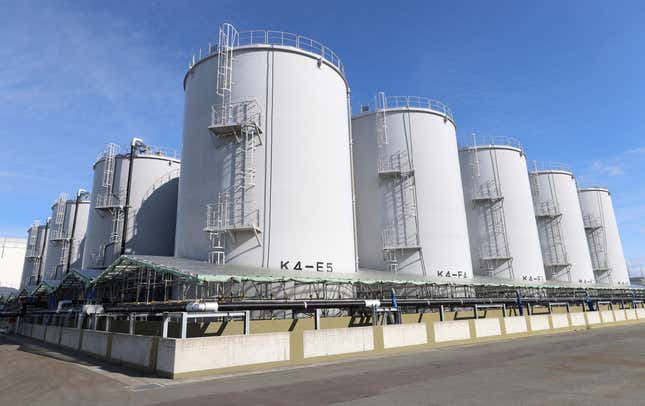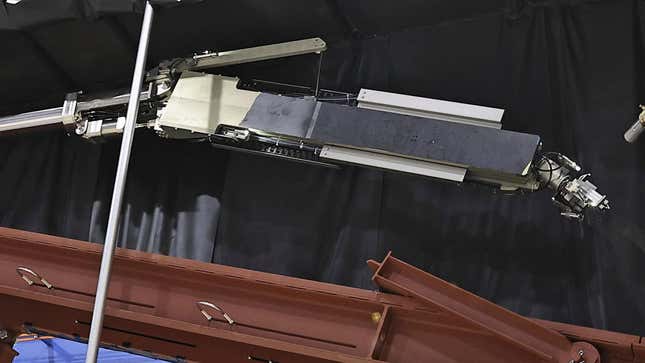
The operators of the Fukushima Daiichi nuclear power plant in Japan demonstrated a new robot to help clean up melted fuel debris on Tuesday, according to a report from the Associated Press. The robot won’t actually start working until October, but it underscores just how much there is to do 13 years after a 9.0 earthquake caused the plant’s meltdown.
Tokyo Electric Power Company Holdings (TEPCO) demonstrated the robot where it was developed, at Mitsubishi Heavy Industries in the city of Kobe, on Tuesday. The bot can be deployed in pipes and includes telescopic tongs that can pick up small amounts of radioactive fuel at a time.
Advertisement

The robot reportedly picked up just 3 grams of rocks in a demonstration, though the power plant has roughly 880 tons of highly radioactive nuclear fuel contaminating the site. The current plan is for clean-up to take somewhere between 30 and 40 years, though the AP notes that’s probably way too optimistic, given the current rate of robot development.
Advertisement
The plant operator has struggled with various robots breaking down over the years, even though those were just exploratory bots. Removal of the fuel debris was supposed to start in 2021.
“We believe the upcoming test removal of fuel debris from Unit 2 is an extremely important step to steadily carry out future decommissioning work,” Yusuke Nakagawa, a group manager for the debris removal program, said according to the AP. “It is important to proceed with the test removal safely and steadily.”
Advertisement
The plant meltdown occurred on March 11, 2011, after a strong earthquake kicked off a tsunami that hit Fukushima. The natural disasters killed over 15,000 people and the subsequent meltdown killed one person from radiation and sickened dozens more with cancer or other injuries.
Services Marketplace – Listings, Bookings & Reviews